Not Just Another Hunt
Bighorn sheep, conservation success and new generation of archers…
For me, it was about continuing to live the dream. For the kids of Loreto, it was the beginning of even bigger dreams for their future. For the bighorn sheep, it was a conservation success that keeps their species alive and well.
This is a story of completing a hunting quest while furthering wildlife conservation and extending the hunting culture into the future. Since the beginning of time, this has been the saga of the hunter, the legacy of the hunter.
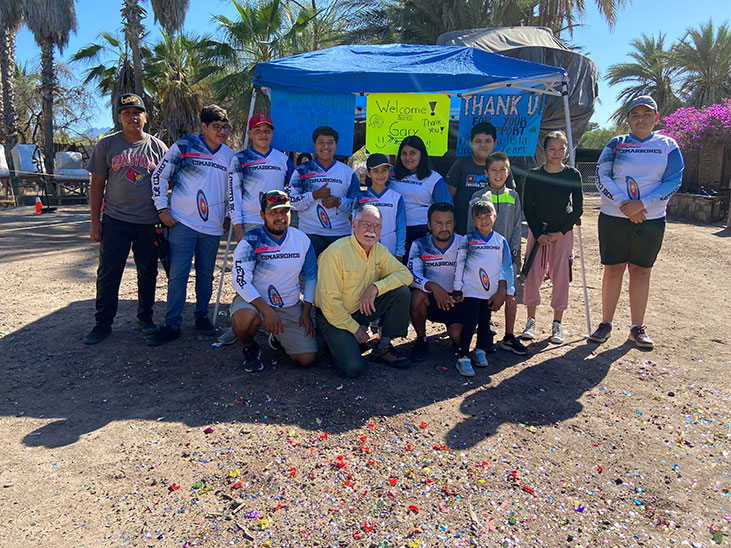
It all took place on an arid island in the Sea of Cortez just off the east coast of Mexico’s Baja Peninsula. It was a study in contrasts where inhospitably steep and treacherous rocky terrain served as a stark background for the overwhelmingly warm and hospitable reception of local guides; young, budding bowhunters and target archers.
And it all happened during the COVID pandemic, which further underscores the truth that hunting is more than just a hunt and that the hunt is more than just arrowing game animals. Hunting is a natural thing, pure and simple. In nature, all is well.
By the end of this magnificent safari, the fact that I was able to take a desert bighorn ram and be the second bowhunter ever to quality for the Pantheon Award seemed at least somewhat anticlimactic, because during what turned out to be a year-and-a-half-long bowhunting quest resulted a continuation of an epic wildlife conservation program and the introduction of another generation to the ethic of hunting.
In the beginning, I planned a hunt on Carmen Island off the coast of Loreto, Baja California, Mexico to take my 12th Ovis species, the Weems’ desert bighorn sheep.
Yet this was a return hunt because I didn’t connect on my first hunt and because of postponements necessitated by the COVID pandemic.
The hunt itself was memorable, although not of particularly long duration. We were in a canyon, about 30 feet above the floor in a little hide. In such settings, there is no guarantee you will even see anything. One evening we saw five rams, but they weren’t old enough.
Then the next morning we never saw anything — never saw sheep until 7:40 p.m. and they were a quarter mile away on a ridge, staring down into the canyon.
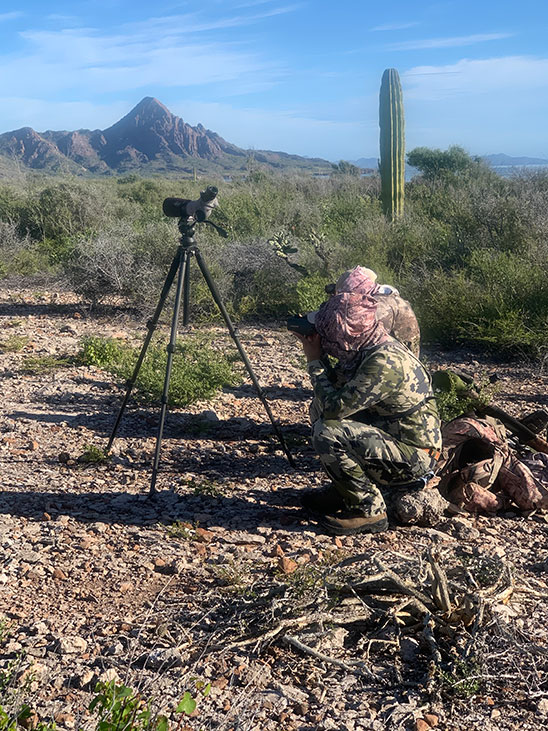
Eventually, the sheep began to come down the mountain. We had to wait for them to cover the distance and then only four sheep showed up. I saw them at about 50 yards and wondered where the rest were.
The old man didn’t come with the rest of the sheep. He came down a different trail from the right. I couldn’t see him, but the guide could hear his hoofs on the stones. He came in very cautiously.
When he finally came into view, he took three or four steps and stopped. That is when I made the shot. He was 22 meters away and we were 30 feet above him, so the angle was quite severe. The arrow zipped right through him and made a noise when it hit the rocks steeply behind him. The arrow ricocheted off the rocks and created a shower of sparks.
The ram ran straight ahead into the thick bush. We saw the blood and it was very light, and when we found him dead, he had gone less than 150 yards from where he was when the arrow hit.
The magnificent ram was 11 years old and horn length was 33-plus and 36-plus, totaling 165 4/8 inches – the result of true conservation!
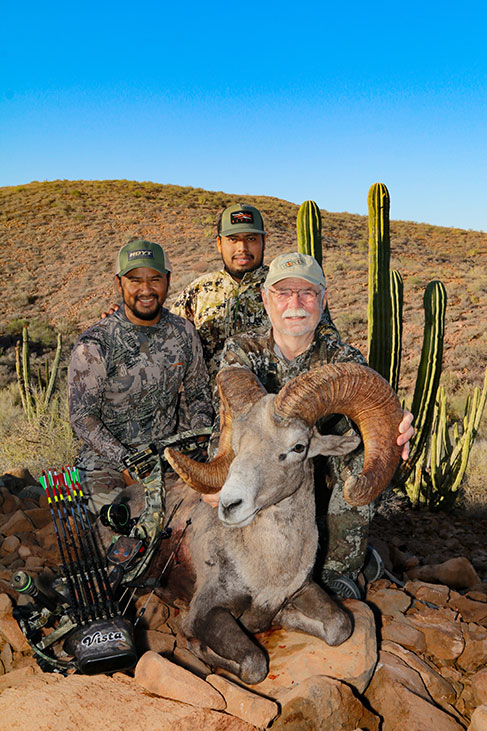
On this hunt, I was using a new Hoyt Ventum 33 set at 67 pounds. My arrows were Easton FMJ 340 and tipped with the new Sevr 125g and 1 ½ cut broadhead for max penetration. Arrow weight was 495 grains.
Immediately after the successful hunt, when we headed back to the mainland, I was in for a big surprise that made this one of the greatest hunts of my life. Truly, it was a hero’s welcome from a group of youngsters and their parents.
But allow me to digress. When I arranged the first trip, Sergio Jimenez, manager and marketer of the Mexico Hunts program, handled all of the details marvelously, so that when I arrived, everything was in order.
When I arrived on my first hunt, I was met by Gaspar Bautista, the on-site manager, and Jesus Alberto, his assistant. They did everything they could do to make the hunt successful.
Gaspar had an old bow and Jesus didn’t. On the first trip, I took two bows, one as a backup. So, by the time that hunt was over, I was able to fit those bows to those two guys and they immediately started shooting remarkably well.
They took it all seriously. During that hunt, Gaspar told me about his 11-year-old son and that he really liked to shoot. It was something that he and his son could do together. Also, I learned that there were other kids in city of Loreto who had begun to express an interest in archery.
I came home and during subsequent internet correspondence, Gaspar talked about the possibility of trying form a bowshooting club. He said he had two or three students, so I started acquiring the bows to help them. I acquired 15 bows over 18 months, plus arrows, releases, arm guards and accessories.
Along the way, Gaspar learned a lot about keeping the bows all tuned. He was watching the kids and I learned from my visit what a good instructor he is.
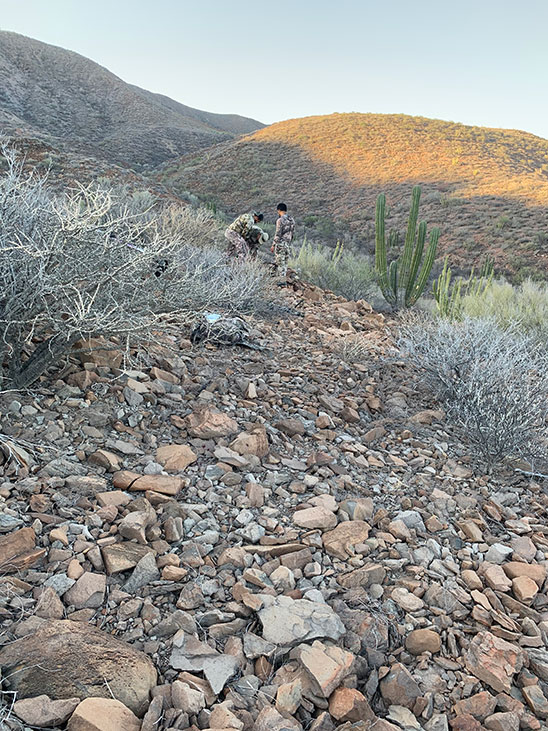
They were shooting some 3D targets and he was hoping they could do 3D, but there was little 3D available. They learned that the State of Baja California and the cities there have archery programs for Olympic shooting.
The local kids are doing exceptionally well. Three of the 15 have moved up in points and are going to La Paz for a tournament. That will establish them and then if their parents can afford it, they could go to other tournaments in Mexico – maybe even to the Olympics if they do really well.
These youngsters range in age from seven or eight to teenagers and their excitement is beyond my ability to put it into words.
When we got back from the hunt, we drove into this empty lot where they had targets set up at all different ranges and they had this canopy with handmade signs, celebrating the event.
They welcomed me and thanked me for funding the effort that got them started. They have now formed a Loreto Archery Desert Bighorn Sheep Group.
They had this beautiful painting that this local artist painted and they unveiled it for me. It is what the artist pictured as the king of all the rams. Behind, there is one of the big mountains on the island.
The painting has ancient arrows that show he has survived all these years and there is a sea turtle in the sky and things that represent the ocean. They made T-shirts for all the shooters and every kid gave me a big hug and Thank You and the parents were so grateful. It meant a lot to me.
That night we had a big dinner with all the shooters and the two coaches. They are limited to the amount of hunting they can do down there, but the manager said they can and do go pig hunting with their bows.
Over the years, people have asked me why I do things like supplying archery equipment for youngsters to learn to shoot bows and arrows. I do it because it is my passion. I love to see kids get interested.
I guess that is why in 2002 I was honored to be recognized in the Congressional Record as International Ambassador of Bow Hunting.
But the successful hunt and the newfound interest in bowhunting among the younger generation of Loreto would not have happened absent a remarkable example of effective wildlife conservation.
Carmen Island is an interesting conservation success. The island is 16 ½ miles long and covers 37,312 acres. The tallest mountain is 1,630 feet high and most of the island is rough, sharp, steep mountains – not easy to climb. We had to hike the majority of the island on foot because it does not lend itself to travel by vehicles or horses. Gaspar Bautista, a wildlife biologist, heads-up both hunting and fishing operations there. Jesus Alberto guides and takes care of the fishing program.
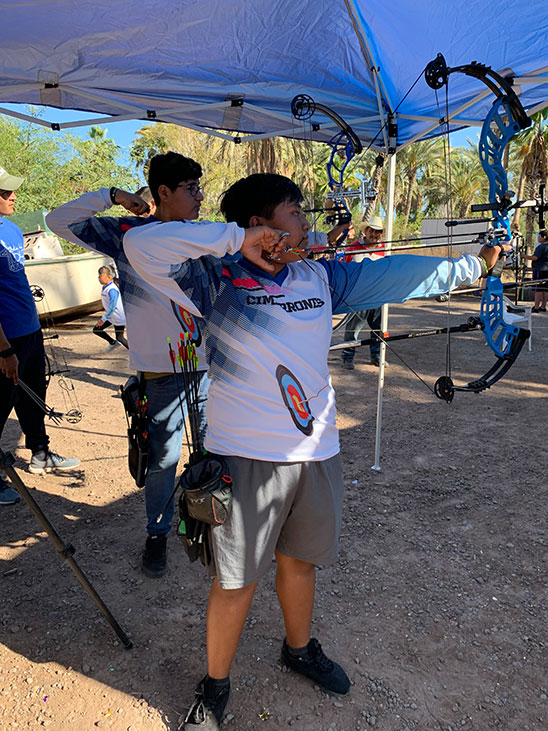
The Sada family acquired Carmen Island in 1995 and started the conservation program there at that time. Initially, they brought 26 sheep to the island from the mainland — 22 ewes and four rams. Some years ago, they moved 80 sheep back to the mainland. Now they have 750 sheep on the island – 50 percent rams and 50 percent ewes. That number of sheep is at, or close to, the carrying capacity of the island.
Sheep, even desert sheep, require a fair amount of water. Originally, there were only two water holes – only seeps at times. They also added two more water holes with solar systems during times of drought. They even feed the sheep when there is no rain and little natural feed.
Historically, there was a salt mine on the island, which was shut down in 1984 after being active for over a hundred years. Roughly 800 people worked at the mine, but today there are only eight people working on the island, maintaining the sheep and the island.
The government regulates how many sheep they can take — 20 a year on average. Currently, there is about a 50/50 ratio of bowhunters and gun hunters on the island. On average, they are successful with four complete days of hunting. The average trophy size is 160 for bow and 163 for gun hunters.
My ram was one of the 20 taken in that year. For me, though, it was so much more than just another tremendous animal.
With this ram, I completed my 12th species of 12 kinds of sheep. This desert bighorn subspecies is called the Weems’ and down in Baja is the only place this species of sheep lives.
I now have 12 species of wild sheep, 12 species of capri (goats and ibexes) and the four north American sheep. They call it the Big 3 and I have completed everything in SCI’s world hunting program.
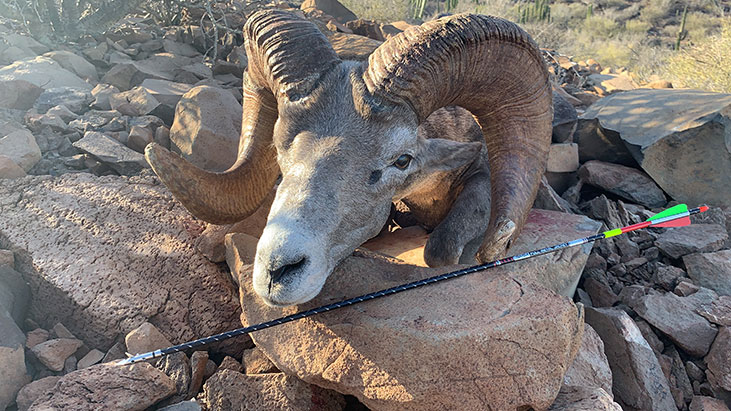
That makes me only the second bowhunter to qualify for the Pantheon Award. Archie Nesbitt was the first bowhunter to achieve it.
That award now has much more meaning than it might have had, if for no other reason than the last animal I took to qualify for it also represents so much more than just another hunt.
For those of us whose hunting careers have been long and eventful, I guess that’s the way it works. Achieving goals is important, but never as fulfilling as the journey it takes to accomplish them. Truly, it is the safari through life that matters most.
As I sit here in Michigan, quietly looking around my wildlife room or gazing out the window at the leaves flickering in the wind, my mind goes back to the people and places I have known as a hunter.
The laughter and joy of the young archers from Loreto still echo in my ears as vividly as they did the day we shared together. As hunters, it is comforting to know that we have made a positive impact and difference.–Gary Bogner, SCI Past President

